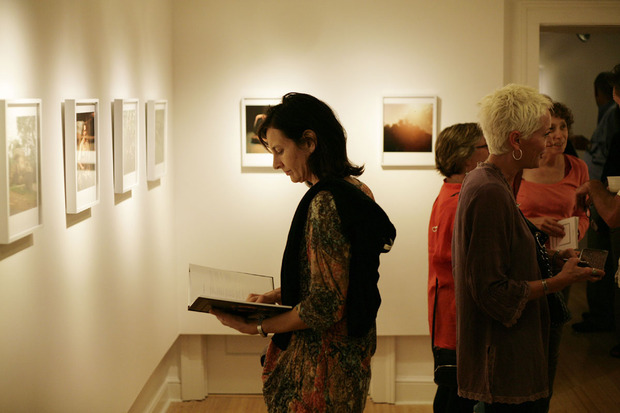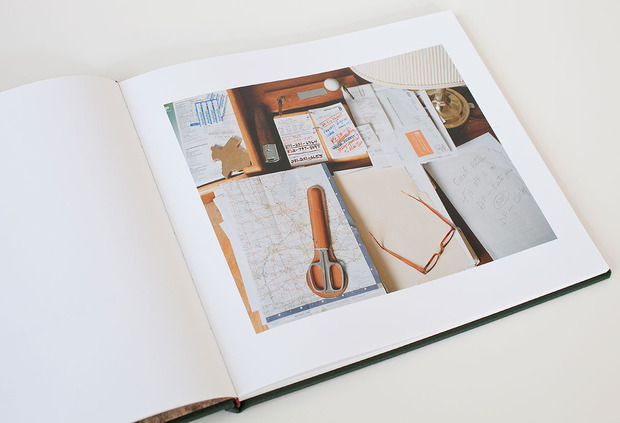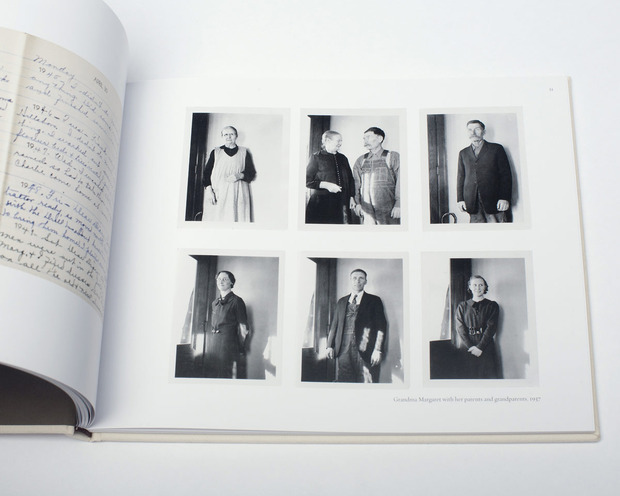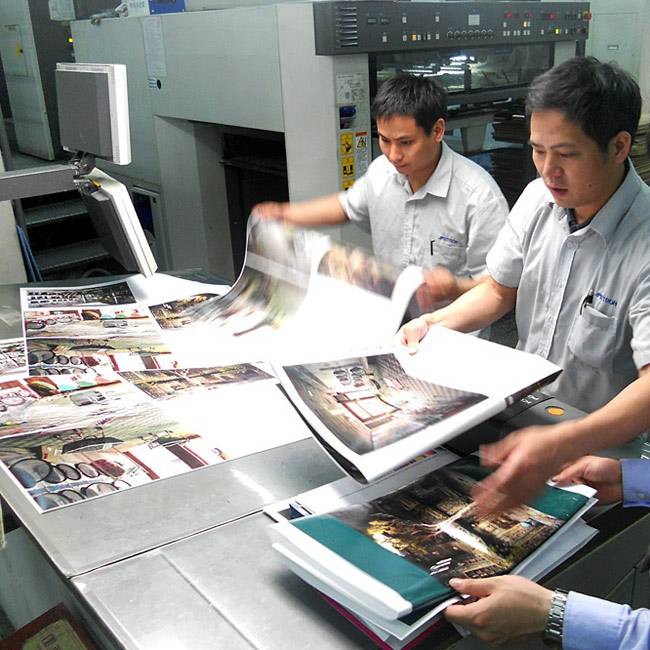Open Book: Taj Forer of Daylight Books
We interview the co-founder and editor for the first of our three-part series on small publishers ahead of the NY Art Book Fair


Like so many businesses today, the publishing industry is facing new challenges due to rapidly changing technologies. With the New York Art Book Fair taking place on 20-22 September, we chatted with three art book publishers about how they do what they do—and why they do it. Our first discussion is with Taj Forer, co-founder and editor of Daylight Books, a non-profit organization based in North Carolina.
When did you begin in the publishing business?
My co-founder, Michael Itkoff, and I started Daylight 10 years ago as a print magazine focused on highlighting fine art photography. We then launched Daylight Books in 2010 and it’s been nothing but a photobook love affair since!

Changing technologies mean artists have more options for getting their work out there. Why is the book still important?
Yes, I couldn’t agree more and should note that Daylight has fully embraced the digital publishing revolution, while simultaneously investing in and growing our print book program. In fact, we just launched Daylight Digital, an iPad and web publication featuring contemporary art, formatted specifically for the appetite of the digital art consumer. During the same time period, we signed contracts with over 10 artists, shaping our most robust print publishing year to date. This speaks to the deepening relevance and inspiration that we find in beautifully-produced art books, while also representing our belief that there is a very important and relevant place for digital media in the art publishing space.

“Emotive artwork, heady text, the smell of offset ink as I turn the pages, the texture of linen on my fingers, the sparse nature of the design, the commercial-free content delivery, the leisurely pace dictated by no one but myself, all build upon the digital-antidote that I identify with the art book.”
As the physical object is increasingly rarified—and in many ways marginalized—by digital media, the appeal or specialness of the physical book maintains greater impact than ever before. Resulting from the embarrassing amount of time that I spend glued to the screen of my computer, iPhone or iPad everyday, it feels like a luxurious or indulgent experience to sit with a beautifully made art book in my hands and slow down to take it in. Emotive artwork, heady text, the smell of offset ink as I turn the pages, the texture of linen on my fingers, the sparse nature of the design, the commercial-free content delivery, the leisurely pace dictated by no one but myself, all build upon the digital-antidote that I identify with the art book. Fortunately, I’m not the only freak out there pining for this type of experience and, to be honest, as more and more of us become exhausted in our digital lives, we turn to finely-produced art books for rejuvenation.

Now it’s easier than ever for artists to self-publish. How has this DIY approach changed publishing?
To be perfectly honest, the rise of self-publishing hasn’t done much to affect our approach to publishing. I love self-publishing and that it has become so accessible—it’s brilliant! However, the difference between a self-published indigo press book via Blurb, Lulu or Magcloud, is just a completely different thing than a book produced by a team of experienced editors, designers and book packagers using offset printing processes and decades of collective creative and production experience.
There’s also a tremendous challenge facing any artist (marquee name artists aside, as they already have an audience for anything they touch) who self-publishes a book when it comes to finding distribution. I also love self-publishing because it creates a tangible platform for artists to experiment with editing, sequencing, designing, packaging—practices that many artists have had little or no opportunity to explore until recently, when working towards achieving the dream of publishing a book of their work with an established publisher. We have found that many book proposals we receive include a self-published maquette that the artist has created. It’s a fantastic sketch of the artist’s vision for his or her book and serves us well as a representative thrust in the right direction, when considering a book project.

Publishing an art book is rarely a big money-making venture. What makes you want to invest in an artist’s work?
Michael and I are both working artists outside our work with Daylight. We both have independent careers in the art world that include exhibition and publication of our personal artwork. As such, we have an incredibly intimate understanding of the significance an art book has on an artist’s work and career, and want nothing more than to support artists whose work we love, in producing books of their work to be distributed throughout the world.
When we find a completed body of work to which we have a strong, positive response, our impulse is to pursue collaboration with the artist to make a book. Call it irrational or lofty, it’s just how we roll! Sometimes the attempts at collaboration work out, sometimes they don’t, but we always try to make beautiful books of beautiful work when we encounter it. I love how a book simultaneously represents a sense of finality for a body of artwork yet, also represents the beginning of an entirely new, eternal life for the artwork. Just as Barthes suggests that the photograph itself documents “the death” of moment while also eternalizing it, so does the art book. Well, sort of.

What recent changes in publishing have you been most excited about adopting?
Daylight Digital was born at the intersection of art and technology and this point of intersection is beyond exciting to us. Understanding that reader behavior is actually very different on the screen than it is on the printed page, we’ve created an approach to publishing contemporary art for the screen unlike anything on the market. We understand the need for a break of the frenetic digital environment that we all occupy so much of the time, yet also understand that most of us cannot easily step away from the screen (we are such addicts) to focus on an art book, so, Daylight Digital brings the best of physical art book publishing to the screen.

We distill the content offering of a long-form art book to be more palatable for the digital consumer (think long-form art book publishing meets short-form web and tablet publishing) while honoring the design elements and experiential nature of physical art book publishing through an elegant and intuitive user experience and interface. We then added a healthy dose of social media-based content sharing to create a current, forward-thinking app and website, rooted in the discovery, enjoyment and sharing of contemporary art. This new space feels like a playground for us and has provided the opportunity to bring amazing artwork to a mainstream audience by communicating with mainstream consumers using the digital language that they speak. (I say “they,” but I am among them.) We are extremely excited about Daylight Digital and recognize that in many senses, the offering represents something disruptive within the art and publishing industries. We also love that Daylight Digital and Daylight Books support and compliment each other in very engaging and nuanced ways.

What projects are occupying your time these days?
Apart from the above mentioned digital branch of Daylight that is in full-tilt, we are about to release our fall 2013 season of books including: “May the Road Rise to Meet You” by Sara Macel, “Homeplace” by Sarah Christianson, “All the Queen’s Men” by Katie Murray and “Postcards Home” by Henry Jacobson. As part of this season’s release, we’re hosting a panel discussion, book signing and public party (yes, there will be beer) in Brooklyn, NY on Friday, 20 September, as part of the Photoville festival in Dumbo. While all of the editorial and production work on these books is now behind us, the promotional work is just commencing. So, we have a lot of energy going into that process at the moment. Then, looking a bit further out, we have a wildly exciting Spring 2014 season of books now in production, one title of which includes the work of Alec Soth, Hank Willis Thomas and Hiroshi Watanabe, to name a few.
Images courtesy of Daylight Books












